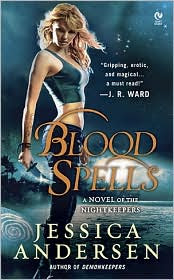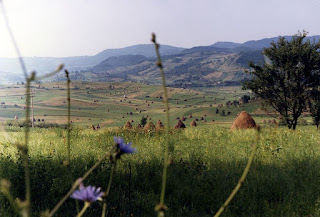Edith McClintock returns as our guest this week. She’s an American writer and traveler and makes her living in the environmental field. Her first mystery, Monkey Love and Murder, is set at a spider monkey research camp in the Amazon . Her second is the first in a series about Miami politics. She blogs about her travels off the beaten track at http://awanderingtale.com/.
I’m typing this in Tusheti National Park in the Republic of Georgia, my feet perched on a wood stump in a small detached kitchen as I wait for the wood burning fire to heat up my water. I spent thirty minutes lighting the damn thing, only my caffeine addiction insisting I not give up.
Tusheti is a spectacular alpine region along the southern slopes of the Caucasus Mountains bordering Dagestan and Chechnya. I’m visiting two friends who are living here for the summer. One of them, Tony, trekked up the muddy road this morning to get a bucket of water before leaving for his hour-long walk to work. I’ve already used half of it to wash a few sweaty clothes from yesterday’s hike. I want to use the rest to wash myself, but that leaves nothing for drinking or cleaning hands post-outhouse, so I will save the bathing for another day as I have no idea where to find more water.
Tony and Seth are working at the park headquarters on an ecotourism project. Like me, they’re former Peace Corps volunteers here for three months doing a Peace Corps Response project. Tony is living in what used to be a small park museum, with empty displays and a gorgeous view of the surrounding mountains.
Unlike “normal” Peace Corps, we applied for our jobs (mine is at the Ministry of Environment in Tbilisi). The living standards and salary are the same as Peace Corps, but psychologically it’s light-years away. If we were still in Peace Corps proper, we’d be in training for another month, still learning the language and culture and living with a host family. We’d probably be in culture shock—with two more years to go.
Most Peace Corps volunteers hop on a plane with two suitcases, arrive in their hither-to-fore unknown country, and don’t even learn their assignments until the end of training when they move to their village or town or park—home for the next two years. I was fortunate enough to at least know my assignment when I left for Peace Corps in Suriname, but that jump into the unknown was definitely the scariest thing I’ve ever done.
I learned a lot during those two years. Including the many flaws of Peace Corps as an organization. The volunteers are often young and unprepared for what they’ll face: the rules and gossip endless, the misunderstandings between staff and volunteers often insurmountable. But the more I see of development work around the world, the more I respect Peace Corps volunteers. Not so much for what they do, but how they live.
Few foreigners go deeper into a culture. Because the work and pay is usually at the community level, you have to adjust your attitude to money, to shopping, to what you really need to stay sane and happy. You learn to take local transportation, to haggle over prices, and eat only local foods.
Right before I left for my original two-year Peace Corps assignment, a good friend from Brazil asked me, “Why would you choose to live in the developing world? I escaped from that and thank god every day I made it to the U.S.!”
It’s a legitimate question about why any sane person, certainly anyone over the age of twenty-one would choose near poverty for two years or to place themselves under the rather capricious patriarchal system that is Peace Corps, “the organization”.
It’s certainly not to change the world. If you join Peace Corps thinking that, even in reference to your village or school, you’re destined for disappointment. I think most Peace Corps volunteers will agree it’s more about changing yourself.
It’s better to join for simple, personal reasons. Whether it’s a love of travel, or cultural immersion, or love for teaching, or love for your counterpart. Maybe you just want to work in the development field and need to pay your dues overseas. Or maybe you want to escape the fast-paced technological world. Everyone joins for a different reason. But rarely is it as altruistic as it might seem to outsiders.
For me, I’ve done it three times now (two years in Suriname as a Peace Corps volunteer and two three-month assignments through Peace Corps Response). I’ve done it for job reasons (wanting to work overseas again) but also for love. Love of the unknown, of the adventure, of disconnecting, of the random, amazing people you meet along the way—even people from your own country you might never have met because of age or class or politics.
I love developing a new appreciation for friends and family back home. For the simple pleasure of a hot bath. For turning on a faucet that produces clean fresh water. But most relevant right now, I love the easy access that comes with visiting other Peace Corps volunteers—Tusheti being a perfect example.
I’m here in a park I’d never heard of a few months ago. I’m a tourist visiting friends. Yet because of their friendship and connections and language skills, we can wander over mountain peaks, through alpine valleys scattered with wildflowers and ancient tower fortresses, and into a remote, nomadic village and have the local policemen invite us in for a feast (a supra) today, a local festival tomorrow, and who knows what the day after.



































